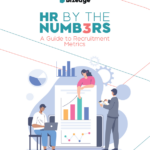
Want to Hire Top Talent Faster?

Time Off: A Workplace Necessity Across All Industries
Creating a successful refer-a-friend program isn’t any magic formula that only a few brands can implement. The fact is, there are certain similarities that all successful brands implement in their referral programs that make them successful.
If this sounds interesting, keep on reading.
What is a refer-a-friend program?
A refer-a-friend program is a strategy used by businesses to encourage their existing customers to refer new customers to the company. Referral programs often reward both the referrer and the new customer with referral incentives such as discounts, cash rewards, or other benefits.
Why should you have a refer-a-friend program?
Having your referral program comes with six main benefits, which are:
- High return on investment (ROI): Investing in referral software is the only true expense of launching a referral program, with the industry average referral rate being 2.35%. Most merchants have a positive return on investment because they can create one at a low cost and have a high referral rate.
- Increased client loyalty: Consumers are more inclined to stick with your brand if they feel valued and compensated for their recommendations. In the long run, this boosts word-of-mouth sales and client loyalty.
- An opportunity to connect with a new consumer base: Without referral marketing, it might be challenging to connect with the friends and family of your current clients. With traditional approaches, such as email marketing and paid advertisements, this is particularly challenging.
- Enhanced brand awareness: Your brand is made more noticeable when customers tell their friends and family about their experiences. This natural word-of-mouth advertising can greatly increase your audience.
- High scalability: Referral programs can easily scale as your customer base grows, making them an efficient and sustainable method of attracting new clients.
- Quality leads: Referred customers are often of higher quality and have a higher lifetime value. They tend to be more engaged and loyal because they were brought in by someone they trust.
Why Referrals Work
Employee referrals are one of the most effective hiring methods. Studies show that referred candidates are hired faster, stay longer, and perform better than those found through traditional channels. Here’s why:
- Better Cultural Fit
As an existing employee, you understand the company’s culture, values, and work environment. When you refer a friend, you’re more likely to recommend someone who aligns with the company culture, leading to higher retention and overall job satisfaction. - Faster Hiring Process
Referred candidates often skip some of the initial vetting steps, making the hiring process smoother and quicker. Since they come pre-vetted by someone the company trusts, there’s less back-and-forth during the screening phase. - Cost-Effective
- Referral programs save your company money by reducing the need for expensive job ads and recruitment agencies. Plus, many companies offer referral bonuses to employees, which means you could earn extra cash just by helping out a friend
How to Launch a Successful Refer-a-Friend Strategy
1. Get clear about your goals: Before starting your referral program, make sure you know what you want from it. For example, more customers, bigger purchases from existing customers, or a higher conversion rate all require a bit different referral programs.
2. Choose your referral incentive: Referral incentives encourage customers to recommend your products to their friends and family. To make a successful refer-a-friend program, make sure you use an effective referral incentive.
3. Make an outreach plan: Your referral program will most likely target your existing and new customers, so you should make a plan for reaching them. For most brands, email marketing is the best method, and the best referral marketing software can help you send emails automatically.
4. Track the referral performance: Once you select a referral program, you can start tracking its performance. A/B tests different variations and doubles down on what works.
Not only can you assist a friend in finding their next opportunity, but you can also have a good impact on your organization and maybe receive benefits by referring them for an opportunity.
